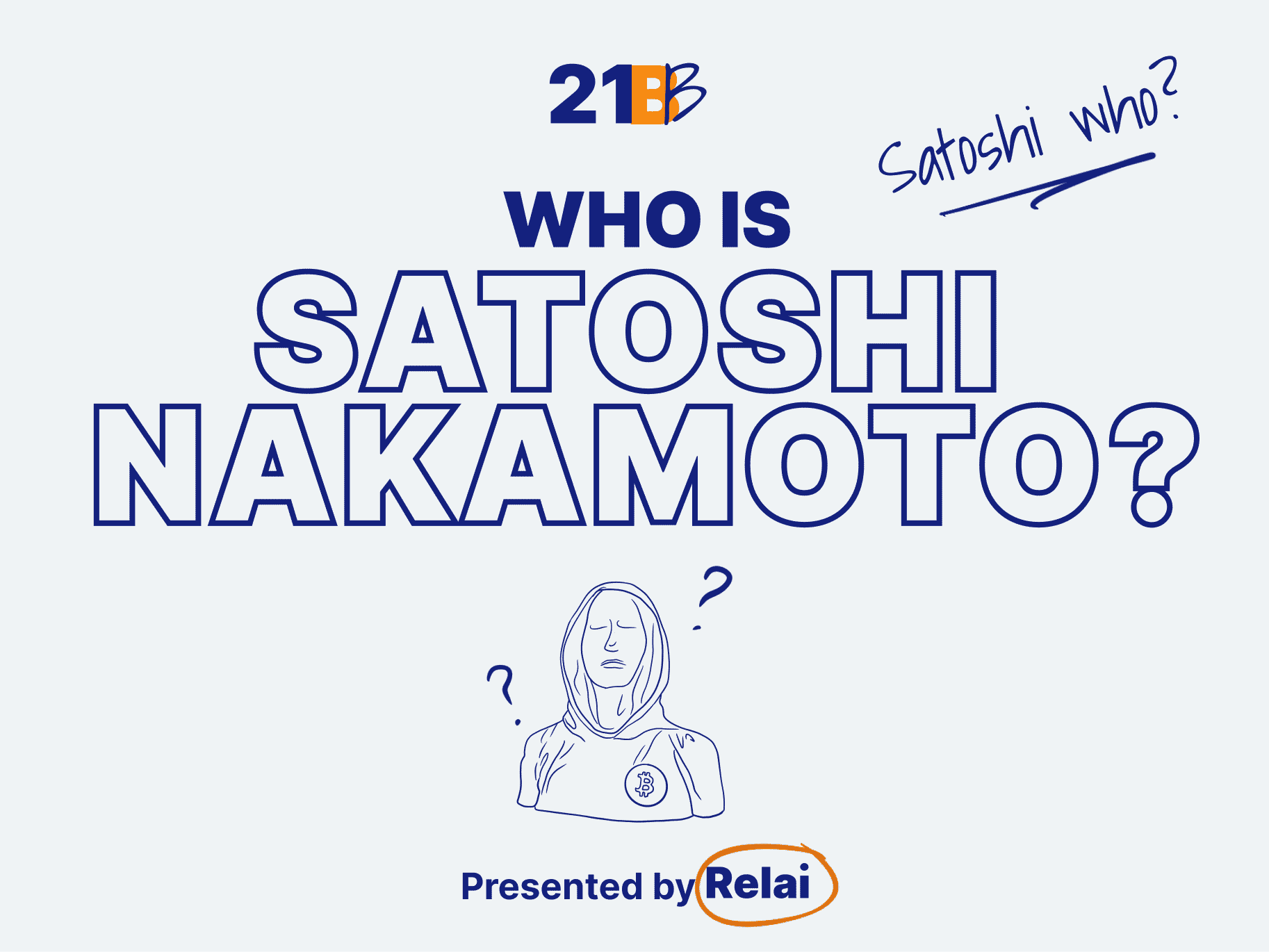The true identity of the mythical Bitcoin creator is still unknown. Was it an individual or maybe a group of people? We will probably never know. However, we can make a couple of guesses and look at some candidates and theories.
This lesson looks at the most likely candidates and theories around the Bitcoin creator’s true identity.
What’s the true identity of Satoshi Nakamoto?
Since the person or group behind the pseudonym Satoshi Nakamoto shared the 9-page long Bitcoin Whitepaper and later the first version of the Bitcoin software with the world, everyone is wondering who may be behind the mysterious name.
After all those years, journalists and Bitcoin fans have made no significant progress in their search for the face(s) behind Bitcoin’s creation.
However, there are a couple of people who could be Satoshi. So let’s take a look!
Hal Finney
Hal Finney was a busy programmer and early cypherpunk. The journalist Andy Greenberg analyzed Finney’s texts and concluded that the writing style would strongly resemble Nakamoto’s. So Finney could have appeared under the pseudonym Satoshi Nakamoto, who – not very creatively – used his neighbor’s name as a cover. Greenberg changed his mind, however, when he met with Finney and read through the emails between him and Nakamoto. After that, it was clear to Greenberg that Finney’s assertion that he was not Nakamoto, but had merely helped the pseudonym first, was conclusive. Finney, a marathon runner, made his ALS condition official in 2009; in March 2013, he posted on the BitcoinTalk forum that he was now completely paralyzed. He continued to work on Bitcoin until shortly before his death and died in August 2014. His body was frozen via cryopreservation to revive him at some point.
Adam Back
One interesting candidate is Adam Back. He is an early cypherpunk and was interested in cryptography and digital money way longer than most people in space. He also invented hashcash, one of the core components used in Bitcoin mining, and is directly cited in the original Bitcoin Whitepaper by Satoshi Nakamoto. Back was one of the first two people to receive an email from Nakamoto, but he claims that he did not pay attention to it until some time later. Today, he is an important figure in the Bitcoin space. As CEO of Blockstream, one of the most influential Bitcoin companies in the world, employing several Bitcoin developers and working on other things like satellite broadcasting of the full Bitcoin blockchain. Back is a regular guest on podcasts and conferences but always denies that he is Satoshi or to even knows who the person behind the pseudonym may be.
Nick Szabo
As with Hal Finney, there is circumstantial evidence for Szabo to be the actual creator behind Nakamoto’s texts and codes. Szabo was not only a programmer interested in cryptography but also someone who worked extensively on monetary history and – as one of the first people ever to do so – on the legal implications of digital contracts, or “smart contracts.” In 1998, he published a paper describing the theoretical design of Bit Gold. However, this intellectual predecessor to Bitcoin was never technically implemented. What seems suspicious to many is that Szabo’s Bit Gold is not mentioned in the Bitcoin whitepaper, despite many parallels. Szabo himself always vehemently denied it. In 2014, he emailed journalist Dominic Frisby: “I’m afraid you have mistakenly exposed me as Satoshi [Nakamoto], but I’m used to it.” New York Times journalist Nathaniel Popper, who retells the early days of Bitcoin in his book Digital Gold, thinks Szabo is Nakamoto despite his protestations.
Dorian Nakamoto
In 2014, the U.S. weekly magazine Newsweek had a big story to tell because they had unmasked Satoshi Nakamoto. Not only was his last name his real one, but other clues were also correct. Nakamoto lived not far from Hal Finney, had studied physics in California, and worked for the government as a computer scientist on secret Department of Defense projects. In the 1990s, he turned to libertarianism, according to his daughter. When more media began to question him, he denied the allegations made by Newsweek. It became clear that the elderly gentleman did not know exactly what Bitcoin was about. He said the statements to Newsweek were taken out of context, and he thought the journalist had asked him about his previous work for the government. Dorian Nakamoto has nevertheless become a star in the Bitcoin scene, regularly invited to conferences – and happy to accept these invitations with a healthy dose of self-irony.
Craig Wright
The most controversial candidate is undoubtedly Australian entrepreneur and computer scientist Craig Wright. Unlike Szabo or Finney, Wright does not draw attention to himself through denials; on the contrary, Wired wrote in December 2015 that Wright either invented Bitcoin or is a genius forger who wants to convince the world that he is Nakamoto. Since then, he has waged a fierce battle against anyone who doubts, filing a patent on the Bitcoin whitepaper and Bitcoin code version 0.1 in 2019. In the dispute over Bitcoin’s block size, he has also launched his Bitcoin fork. Its name is, how could it be otherwise, Bitcoin SV (Satoshi’s Vision).
Other theories
Could there have been a team behind the pseudonym Satoshi Nakamoto rather than an individual? For example, cypherpunks like Adam Back, Hal Finney, and Nick Szabo, whose work is directly or indirectly referred to in the Bitcoin whitepaper. Another interesting theory is that Nakamoto was a nobody watching the action from obscurity. In addition to this, dozens of other theories are circulating. For example, Bitcoin was a U.S. intelligence agency invention, and Silk Road founder Ross Ulbricht or even Tesla CEO Elon Musk was behind it. We’ll probably never know. And in the end, it doesn’t matter. Because as Bitcoin fans like to say: “We are all Satoshi”.
Takeaways:
- There are a lot of theories floating around about who the mysterious Bitcoin inventor might have been. Some of the most popular theories point to a small group of early cryptographers and cypherpunks because they possess the technical knowledge.
- One theory is that Satoshi Nakamoto wasn’t an individual but a group working together and sharing responsibilities.
- We will most likely never know who Satoshi was.
Disclaimer: Relai services are exclusively recommended for Swiss and Italian residents. None of this content constitutes investment advice. Always conduct your own research before investing in any digital asset.





